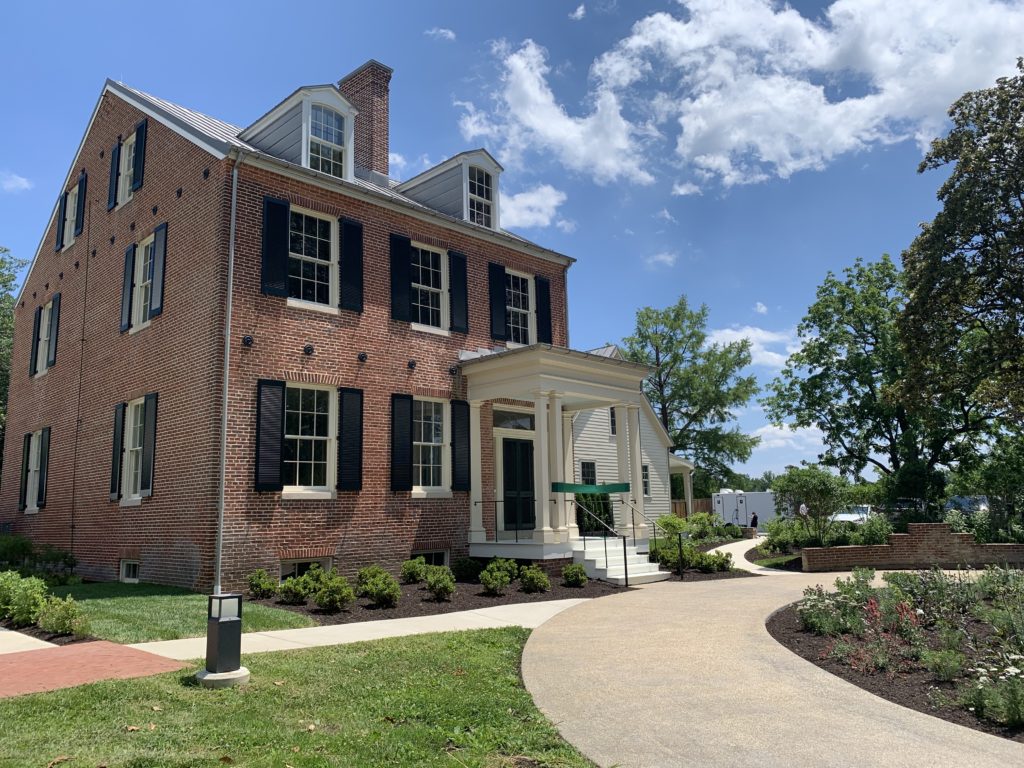Historic Smithsonian House Opens to Public

By Noah Hale
An old house is now the newest part of the Smithsonian Environmental Research Center (SERC) property in Edgewater. Woodlawn, as the building is now known, was built in 1735 for tobacco planter William Sellman and his family, one of the first European families to arrive in the colony of Maryland. It is now the oldest in-place building in the Smithsonian collection.
Over the centuries, the home has undergone some drastic changes. In the 1800s, a grand three-story wing was added to the original building; in the energy crisis of the 1970s, a passive solar wing was added by the Kirkpatrick-Howat family that lived there. The Smithsonian acquired the nearby Contee Farm in 2008 and then expanded to the Sellman Farm two years later, hastening the creation of an official archaeology lab. Since then the plantation has been of great archaeological interest.
Now, Woodlawn will serve both as a welcome center and a museum for guests curious about the colonial home’s rich history and its connection to our life today.
The connection is more than history—it’s alive, says SERC Director Anson “Tuck” Hines. “[T]his program relies on volunteer citizen scientists who have been piecing together a fabric of place and time that is entirely local, that forms the quilt of the American context today.”
Despite being almost 300 years old, there are still many living descendants of the families who lived and worked at the home. Two siblings who were the grandchildren of the last woman who lived there remember stories from the times. Their aunt would share her opinion of the changing times with them. “I remember talking to my Aunt Vicky about the transitions she saw from the 19th century to the 20th century—she couldn’t believe the advent of the automobile,” said one of the grandchildren. “She thought it was a loud, ugly machine.”
Lyndra Marshall (née Pratt), recalls how her mother shared family history with her. “I became the family historian as a child, so I had been doing this work for almost 60 years,” said Marshall. “When I was told about the (Woodlawn) project, someone had said that they heard my mother was a Sellman and I said, ‘Well, I guess I have to join the project.’”
Now Marshall has become the go-to genealogist for the exhibit as well as a researcher, focusing on the stories of the enslaved African Americans who worked on the farm. “As a child, I wanted to know who we were, who we were connected to, and why there was this divide between the different ethnic groups. I also wanted to know where the African American side came from.”
An all-volunteer team of citizen scientists and archaeologists have gathered stories as well as artifacts to create a picture of what life was like at Woodlawn.
Lonnie Bunch III, the 14th Secretary of the Smithsonian Institution and the first African American and historian to serve as head of the Smithsonian, recognized that the exhibit was built in large part by people like Lyndra who can remember. “[W]e are only able to tell this story because of people like you,” he remarked.
The Woodlawn House Visitor Center is open every Saturday, 10am to 12:30pm: https://serc.si.edu/.
